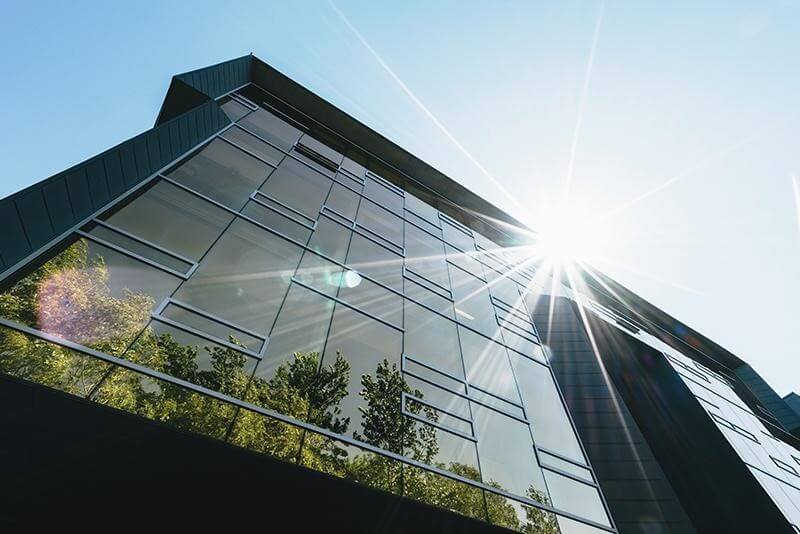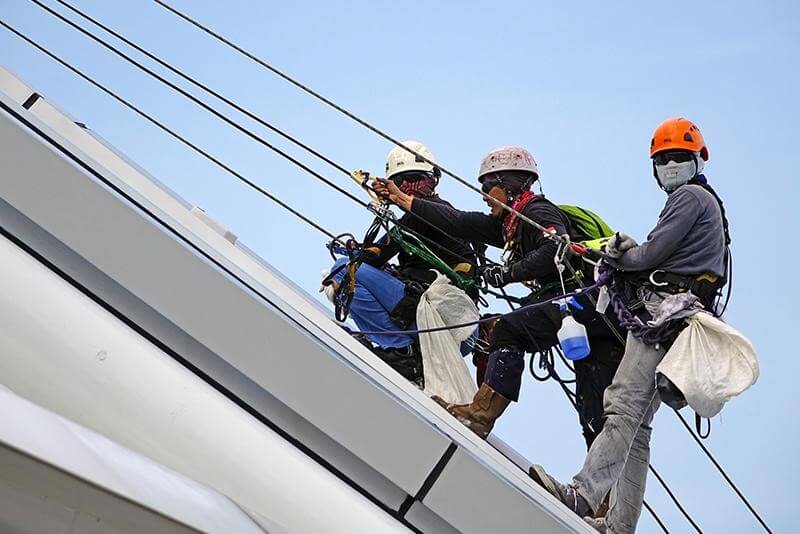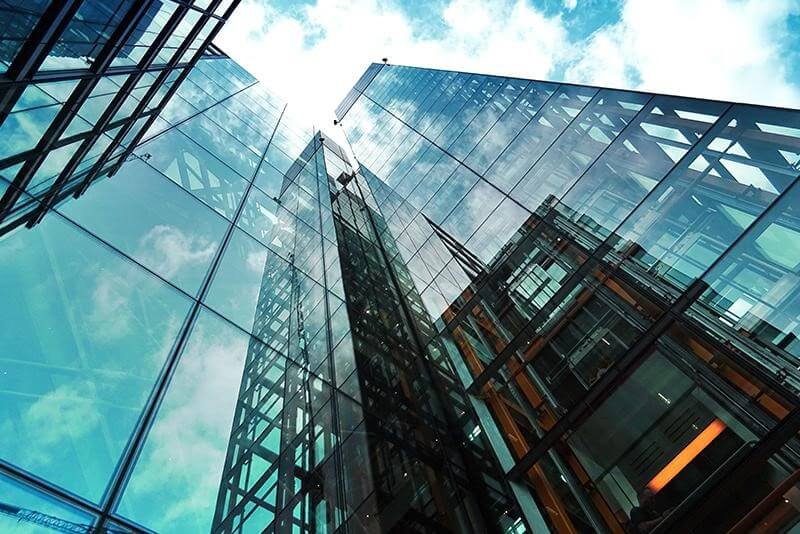Recent stories related to the shattering of glass in high-rise units have created cause for concern. This is not a minor problem – the use of inadequate glass presents serious dangers.
The rate of unit construction in Australia’s major urban hubs has increased in recent years as population growth and changing demographics have created more demand than ever. Some see this as a boom period for the Australian construction industry, bringing a higher demand for more work. Designers and construction crews have built apartment blocks quickly to meet the demand.
But therein lies the problem. The speed of such construction work means that oversights can occur through the use of non-compliant building products and materials. This raises the potential for leaks and fires to occur.
However, it is glass that has become a major hot-button topic in the industry. There is an increasing number of incidents of falling glass panels or shattering glass in high-rise buildings. This presents obvious dangers to the people below. Moreover, it increases the risk of building residents falling from windows.
In May 2017, the Allianz Centre in Sydney experienced such an issue. A glass panel from the top floor of the building came hurtling down towards the people below. It shattered upon contact with a gym, showering people with broken glass in the process.
It was an incident as sudden as it was surprising. Witnesses say the panel made an “almighty bang” before shattering. Luckily, nobody suffered any serious injuries during the incident. But imagine what might have happened if that panel had made it all the way to the pavement.
The Scale of the Problem
This may seem like an isolated incident at first. After all, it seems so ludicrous for a panel of glass to just detach itself from a building and fall.
But this line of thinking leads to people ignoring the true scale of the problem. This falling glass panel from the top of the Allianz Building is not an isolated incident. For one, a single glass panel falling creates serious safety concerns about the rest of the building. If one panel could fall, what is to say that others are not compromised? Moreover, it is not just the Allianz Building that has experienced this issue.
The news recently reported on an entire spate of falling glass panels in Melbourne. In one case, two glass balcony windows from the same building shattered within a couple of months of each other. Some news outlets even obtained footage of the incidents. This proved that no external factors played a role in its spontaneous shattering. Again, pedestrians on the floor below were lucky because the falling glass panel missed them by mere metres.
Perth has also experienced similar problems. In July 2017, the news reported on four separate instances of falling glass panels from the same building. The problem at the former Bankwest Tower in Perth became severe enough to warrant further investigation. The owners even installed temporary covered scaffolding to protect people should it happen again.
Falling glass is not a minor problem in the Australian construction industry. In fact, it is close to becoming an epidemic. With so many new apartment buildings having gone up during the last few years, you have to wonder just how many are at risk of similar incidents.
Thankfully, the incidents mentioned here haven’t caused any major injuries. But you have to wonder how long it will be before a falling glass panel hurts someone.

The Problems Falling Glass Causes
We have touched upon it a little bit, but there are some problems that falling glass causes.
Glass hitting pedestrians is the most obvious of this. Falling glass has the potential to cause serious injury, or even death. The impact of the glass depends on the type used. Standard glass does not usually shatter into small pieces. An entire panel hitting somebody could be fatal. At best, it would lead to severe lacerations. Even if the falling glass panel does not directly hit people, the shattered shards could still fly out after impact with the ground. Again, this could cause injury. But it may also cause problems with traffic and damage to nearby buildings and installations.
The less obvious issue relates to the dangers that falling glass panels causes to building residents. Somebody who is leaning on a panel that dislodges itself could fall out of the window. Moreover, a falling glass panel leaves a large gap. Imagine a child left unsupervised for a moment in an apartment unit from which the glass has fallen. It only takes the wrong combination of circumstances to occur for somebody to suffer a fall. Such a fall would likely be fatal, especially from high floors in an apartment unit.
Simply put, falling and breaking glass is not a minor problem. In fact, it has potentially lethal consequences. That raises a question: what has to go wrong to allow incidents like those we’ve previously mentioned to occur?
The Flaws That Lead to Falling Glass
This is not a phenomenon that’s limited solely to the Australian construction industry. It even has a name – Spontaneous Glass Breakage.
Typically, the problem occurs in tempered, or toughened glass. And it occurs exactly as outlined in the news stories this article mentions. There does not appear to be any problem with the glass on the surface. But it suddenly shatters and falls for no apparent reason.
A spate of similar incidents in the United States and Canada prompted regulators and lawmakers to investigate the problem. They came back with a few potential causes of Spontaneous Glass Breakage.
Flaw #1 – Minor Edge Damage
In most cases, the damage that leads to breaking occurs before installation of the glass. This happens when manufacturers cut the glass into panels. Tiny nicks and chips may form by the edges or little nicks might get taken out of the glass during packaging and transportation.
These tiny flecks of damage may not seem like a big problem at first. In fact, they are sometimes so small that they’re invisible to the naked eye. But they damage the integrity of the glass.
Tempered glass expands and contracts in relation to the surrounding temperatures. Each time this happens, a little more stress gets placed on the tiny defects in the glass’ edges. Changes in the wind, the building’s movement, and other environmental factors add more stress.
Eventually, this combination of stresses turns a nearly imperceptible problem into a major one. The glass shatters and falls. This seems to be a spontaneous action. But the truth is that the problem occurred months or years ago. It just takes time to manifest as shattered and falling glass.
Flaw #2 – Thermal Stress Deficiencies
Thermal stresses in glass are even more difficult to detect. They occur due to temperature differences between the edges and centre of the glass. Specifically, this happens when the centre gets hotter than the edges. This causes the centre of the panel to expand at a faster rate than the edges. The result is even more tensile stress on the edges of the glass.
In extreme conditions, this tensile strength exceeds the glass’ edge strength. Shattering soon follows.
This means that window designers must account for thermal stress in window design. This is especially the case for glass that uses solar control coatings. This coating attracts heat, often to the centre of the glass panel. The larger the panel, the more heat it attracts.
Moreover, such panels have larger edges, which need to maintain a high strength to account for expansion from the centre.
Manufacturers must conduct thorough thermal stress tests. This is even more crucial when installing glass in typically hot locations, such as many of the cities in Australia.
Flaw #3 – Frame Breakage
The expansion and contraction of glass does not just affect the glass itself. It also affects the frames that surround the glass. Repeated changes in temperature place these frames under more stress, developing faults, and consequently results in the glass coming loose. This may be what happens when entire panels fall from a building. The glass does not shatter because it doesn’t have a defect. Instead, the flaw lies in the use of a poor frame.
Typically, the use of non-compliant building products creates frame flaws. For example, the frame may not have setting blocks or gaskets. These cushion the glass from the frame. Without these cushions, the friction between frame and glass leads to damage. Over time, this damage becomes severe enough to cause the window to shatter or the frame to malfunction.
Potential Solutions

What can manufacturers do to protect against these flaws?
It is not a simple question to answer. On the most basic level, increased stress testing will help, as well as the use of compliant building products. Ensuring that the glass’ edges can withstand pressure is a good start. This process requires scaling up when the glass is for use in high-rise buildings. The glass must account for changing temperatures, wind conditions, and building movement.
Builders should also conduct more thorough checks on-site. If they notice damage around the edges of a glass panel, they should refuse to install it. Even a minor nick compromises the strength of the entire panel. Think of it in the same way as a chip in a windshield. It may be a small problem at first. But that chip gets larger and larger over time. Eventually, it becomes a crack and may even lead to the glass shattering. The same happens when there are minor chips and nicks in the glass used for high-rise apartments.
There are also some protective measures and building products that you could put in place to prevent falling glass panels. For example, some use safety window film to protect against shattering. This film prevents the glass from falling, even it if breaks. Others install metal screens under glass to catch any that might fall.
The type of window that you install can also protect against shattering. For example, the segmented construction of louvre windows can help spreads stress over several smaller panels. This means the outer edges experience less stress.
Finally, a crackdown on the use of non-compliant building products may also help. It is likely that a combination of regulatory changes and increased oversight will lead to better building practices.
Conclusion
Falling and shattering glass is not a minor problem. It’s happening frequently in Australia and presents a danger to people. To find out more about how using Safetyline Jalousie louvre windows protects against Spontaneous Glass Breakage, do the following:
- Examine the technical specifications of our windows.
- Read about some of our most recent projects
- Contact a Safetyline Business Manager to discuss your requirements
References:
1. Panel falls from top floor of high-rise building in Sydney’s CBD – The Sydney Morning Herald
2. Shattered glass: what causes panes to fall off buildings – CBC
3. Spontaneous Glass Breakage: Why it happens and what to do about it – The Construction Specifier























